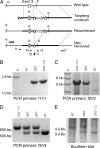Abolished cocaine reward in mice with a cocaine-insensitive dopamine transporter
- PMID: 16754872
- PMCID: PMC1482610
- DOI: 10.1073/pnas.0600905103
Abolished cocaine reward in mice with a cocaine-insensitive dopamine transporter
Abstract
There are three known high-affinity targets for cocaine: the dopamine transporter (DAT), the serotonin transporter (SERT), and the norepinephrine transporter (NET). Decades of studies support the dopamine (DA) hypothesis that the blockade of DAT and the subsequent increase in extracellular DA primarily mediate cocaine reward and reinforcement. Contrary to expectations, DAT knockout (DAT-KO) mice and SERT or NET knockout mice still self-administer cocaine and/or display conditioned place preference (CPP) to cocaine, which led to the reevaluation of the DA hypothesis and the proposal of redundant reward pathways. To study the role of DAT in cocaine reward, we have generated a knockin mouse line carrying a functional DAT that is insensitive to cocaine. In these mice, cocaine suppressed locomotor activity, did not elevate extracellular DA in the nucleus accumbens, and did not produce reward as measured by CPP. This result suggests that blockade of DAT is necessary for cocaine reward in mice with a functional DAT. This mouse model is unique in that it is specifically designed to differentiate the role of DAT from the roles of NET and SERT in cocaine-induced biochemical and behavioral effects.
Conflict of interest statement
Conflict of interest statement: No conflicts declared.
Figures





References
-
- Ritz M. C., Lamb R. J., Goldberg S. R., Kuhar M. J. Science. 1987;237:1219–1223. - PubMed
-
- Amara S. G., Kuhar M. J. Annu. Rev. Neurosci. 1993;16:73–93. - PubMed
-
- Wise R. A., Bozarth M. A. Psychol. Rev. 1987;94:469–492. - PubMed
-
- Bergman J., Madras B. K., Johnson S. E., Spealman R. D. J. Pharmacol. Exp. Ther. 1989;251:150–155. - PubMed
Publication types
MeSH terms
Substances
Grants and funding
LinkOut - more resources
Full Text Sources
Other Literature Sources
Molecular Biology Databases
Research Materials

